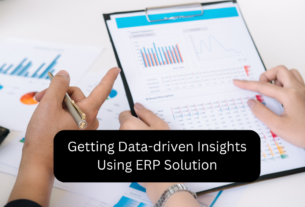A customer relationship management system like Salesforce demonstrates its maximum strength through its ability to establish smooth communication and collaboration with other essential business applications throughout modern digital systems. Your business’s customer-facing operations find their central processing capability within Salesforce. The system requires strong interconnectivity with crucial business applications, including ERP, marketing automation platforms, e-commerce sites, etc.
My experience as a Salesforce consultant shows how successfully implemented integrations drive organizational change while bad integration planning results in unnecessary costs. The following article explores the Foundations of Salesforce Integration Patterns together with Best Practices so readers at every level can understand how to enhance their network connections.
Laying the Foundation: Understanding the “Why” and “What” of Integration
The procedure discussion requires establishing basic foundations first. Which reason drives the necessity to connect Salesforce with other systems? The integration solution addresses three main issues by linking disjointed data systems through automation, which creates whole-business visibility that generates premium customer interactions. Sales representatives can access real-time ERP inventory data as their marketing team receives automated lead generation from your website. The combined capabilities produce operational excellence as well as critical performance-based choices.
The integration process involves precisely what? The variety of options includes financial systems, customer service platforms, and individual application development. The essential element is to choose essential data movement paths and operational functions that align to produce maximum organizational worth.
Read: Family-Friendly 2-Bedroom Apt for Rent: Room to Grow
Navigating the Landscape: Key Salesforce Integration Approaches
Salesforce provides multiple integration options that come with specific advantages and implementation requirements. Your choice of strategy depends on understanding the particular patterns which need attention for your requirements.
Real-time API Integration:
- The technology uses Real-time API Integration to establish direct and synchronous communication between systems through Application Programming Interfaces (APIs).
- A new order placed in one system automatically triggers immediate system updates in the second system.
- Real-time API Integration supports the most urgent data synchronization requirements, particularly inventory checks and credit card authorizations.
- The impressive API framework from Salesforce operates through REST and SOAP APIs to serve as the primary enabling components.
Batch Data Integration:
- Batch data integration is a sensible solution for moving large data sets when time-sensitive synchronization requirements do not apply.
- Data is gathered during set periods before processing, so bulk transfers occur during scheduled times.
- The method is optimized for nighttime data processing of warehouses as well as scheduled customer data transfer activities.
- Data synchronization occurs through the use of Salesforce Data Loader and various third-party ETL (Extract, Transform, Load) tools, which are frequently used platforms.
Messaging and Event-Driven Integration:
- Messaging and Event-Driven Integration work through an event bus and message queue system to establish system communication but operate in asynchronous mode.
- When an event occurs within a system, a queue message is published, followed by subscription-based message processing from interested systems.
- Using this pattern, organizations achieve higher scalability and resilience because systems operate independently without explicit awareness of each other.
- These two Salesforce capabilities, Platform Events and Change Data Capture (CDC) form the backbone of this pattern.
Middleware-Centric Integration:
- Businesses with multiple disconnected applications should use middleware technology to link Salesforce with other legacy systems through automated data translation and transmission.
- Central integration management increases security levels, while error detection and monitoring function from a single point through the implementation of middleware.
Essential Best Practices for Integration Success
Best practices must always be followed when establishing integrations regardless of the selected pattern. The following fundamental guidelines will lead your integration initiative:
Define Clear Requirements and Objectives:
- The first step must consist of thorough documentation for integration requirements before starting any coding activities.
- The necessary data points that require exchange need definition. How frequently? What are the expected outcomes?
- Defining objectives beforehand prevents your project from expanding beyond its original scope and allows the integration to achieve business targets.
Prioritize Data Quality and Governance:
- Data integration will increase the results of data quality problems because systems can magnify existing errors.
- A data governance framework, validation rules, and cleansing mechanisms should be implemented to maintain consistent and accurate data across entire platform connections.
Embrace the Power of APIs:
- Make full use of Salesforce APIs. An organization should always utilize Salesforce’s strong, well-documented APIs.
- Master REST and SOAP APIs before choosing the API that suits your platform requirements.
- You should pay close attention to API usage limitations while making your integration systems efficient.
Design for Scalability and Performance:
- Plan integrations to scale up and perform better by including provisions for future enlargement of data stores and growing transaction activity volumes.
- Your data queries should be optimized while reducing non-essential data exchange so you can adopt asynchronous handling approaches for high-speed operations.
Systems Need to Include Thorough Error Detection with Active Monitoring:
- The possibility of integrations breaking down exists in all cases.
- The system needs robust error handling systems that successfully handle exceptions, along with logging functionality to monitor data flow and identify active problems before they occur.
- Use the monitoring tools on Salesforce and establish alert systems for essential integration problems.
Security First, always:
- Security should be the top priority since integration points are entry points for possible security vulnerabilities.
- Maintain Salesforce security standards using authenticated methods and data encryption for data transport and storage and implementing role-based permission systems.
Thorough Testing is Non-Negotiable:
- To eliminate testing errors, you must perform a complete integration evaluation within sandbox environments before releasing code into production environments.
- Perform tests with positive and negative cases to check system durability and maintain data integrity.
Plan for Maintainability and Future Enhancements:
- Your development process should include maintainable, clean documentation of code that professionals find easy to comprehend and maintain.
- Design an integration model with modular features to make future changes easier during maintenance and enhancement processes.
Conclusion
Businesses that want operational excellence and customer data unification now recognize that mastering Salesforce integration is an essential requirement. Your organization will enable team advancements and superior customer experiences when you choose appropriate integration patterns that suit your requirements while adhering strictly to recommended practices. A completely connected ecosystem develops through deliberate sequence planning, prioritizing data quality benchmarks, and dedicating yourself to scale and maintainable solution development. Your business will achieve increased efficiency and customer-centric success by embracing integration technology to maximize your Salesforce investment potential.




